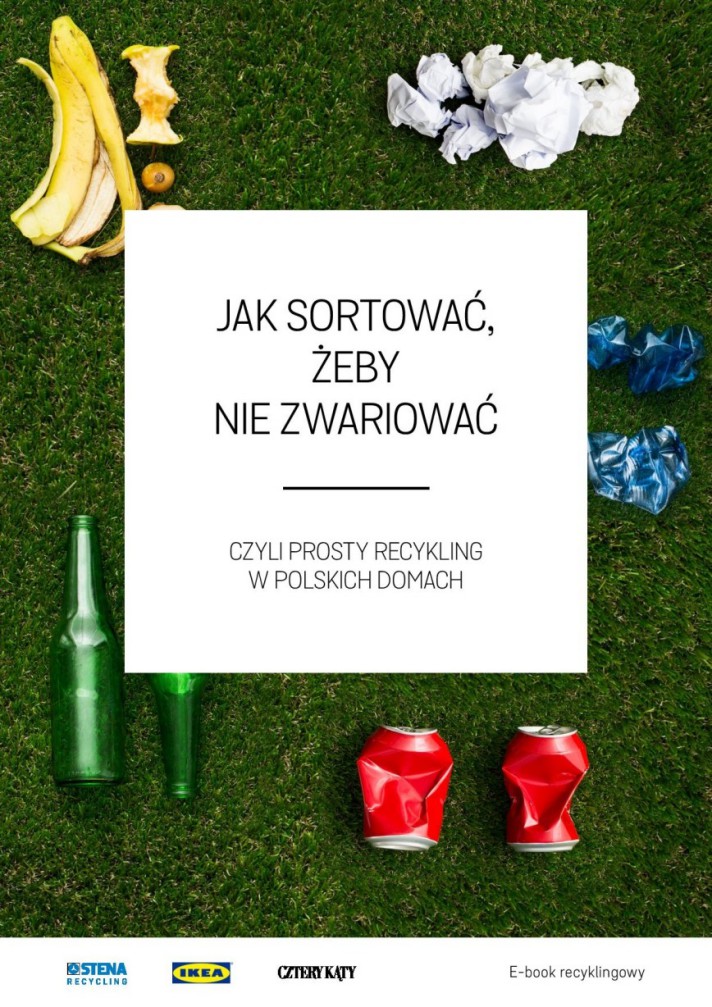News
Stena Recycling Sp. z.o.o.: Jak sortować, żeby nie zwariować?
17-07-2017What sort of waste segregation changes are waiting for us? Which container should receive the milk carton? Why waste is so valuable? Answers to these and many other questions related to the Common System of Waste Segregation can be found in the educational e-book "Jak sortować zeby nie zwariować".
The publication, co-written by Stena Recycling, Ikea and the "Cztery KÄ…ty" magazine, explains the intricacies of waste segregation and helps you find your way around the recycling world. The authors advise what system of containers and markings to use at home so that this activity is as simple as possible and takes as little time as possible. They describe the facts and myths related to recycling and provide a list of troublesome waste to facilitate the daily sorting. In the publication, you will also find practical advice on kitchen design and some inspiration to create your own decorative items from unnecessary objects, such as empty water bottles. One of the articles introduces the reader to the idea of circular economy, which is one of the goals set by the European Union for the coming years.
The publication (in Polish) can be downloaded for free.
New rules for segregation of waste
According to the Common System of Waste Segregation, which entered into force on July 1, municipal waste will be segregated into four or five unified containers throughout Poland. Colorful glass should end up in the green container, the blue one is for paper, plastics and metals go into the yellow one, biodegradable material - brown and optional white glass - white. Replacement of old containers for new ones must not take more than five years, but even on old containers, stickers need to appear to facilitate proper segregation by the end of January 2018 (at the latest).
- Poland recycles around 26 percent of municipal waste, and in line with EU requirements, by 2020 it should increase the level of recycling and reuse of selected components to 50 percent. The changes are therefore made to directly raise these levels. Sweden, which sends only 4 percent of municipal waste to landfills, can be the model example, says Piotr BruĹşdziak, Sales and Marketing Director at Stena Recycling.
The benefits of recycling
Higher levels of waste recovery are expected to contribute to environmental protection and more sustainable development. Materials recovered from waste can be repeatedly used - glass unlimited times, plastic up to 10 times, and paper 6-7 times. Recycling allows to limit carbon dioxide emissions to the environment, energy use and landfill area. For example, recovering a glass from one bottle can save as much energy as a 100-watt incandescent light bulb operating for 4 hours, and plastic material obtained from 35 plastic bottles can produce 1 fleece sweatshirt.
Stena Recycling Sp. z.o.o. - more news and informations




 EUR 4.2515 zł
EUR 4.2515 zł USD 3.6108 zł
USD 3.6108 zł DKK 0.5698 zł
DKK 0.5698 zł SEK 0.378 zł
SEK 0.378 zł NOK 0.3582 zł
NOK 0.3582 zł